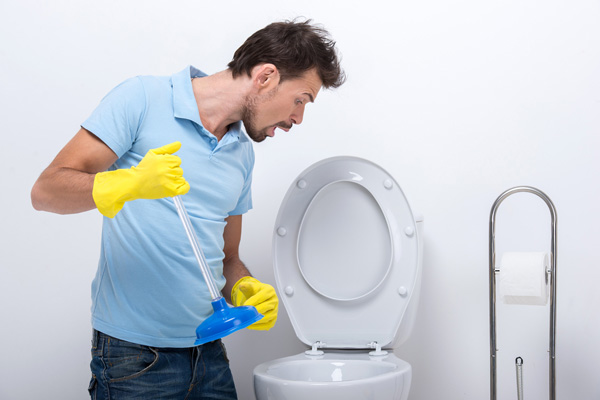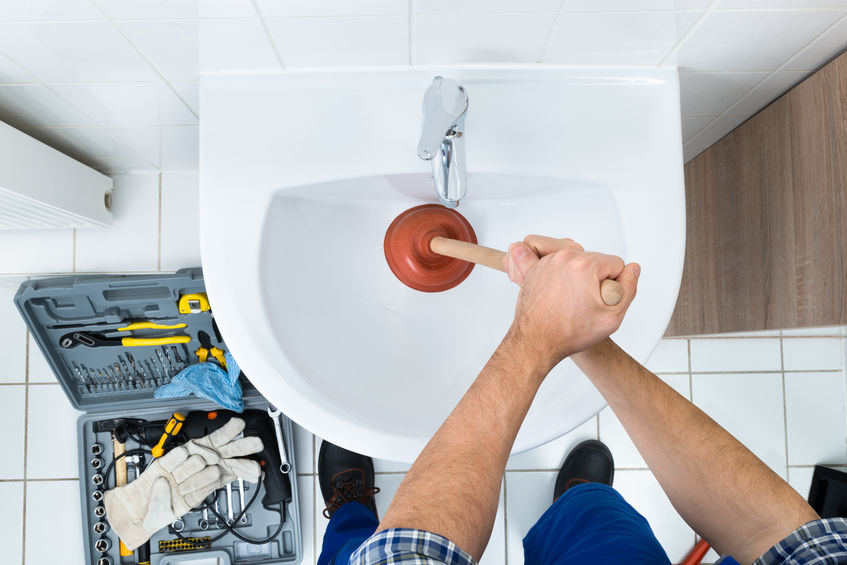Tips to Successfully Apply Plungers and Drain Cleaners: Professional Advice
Tips to Successfully Apply Plungers and Drain Cleaners: Professional Advice
Blog Article
Just how do you really feel when it comes to How to Use a Plunger to Unclog a Toilet or Drain?

Intro
Proper maintenance of home drains is essential for preventing clogs and making certain smooth water flow. Among the trick tools in every property owner's toolkit is the bettor, along with various drain cleaners developed to deal with persistent obstructions properly. This article explores how to use plungers and drain cleansers properly to maintain your drains pipes streaming easily.
Section 1: Comprehending Bettors
Types of Plungers
There are several types of plungers available, each developed for different kinds of drains and blocks. One of the most typical types include cup plungers, flange plungers, and accordion bettors.
Just How Plungers Job
Bettors work on the principle of creating pressure and suction to remove blockages. When appropriately used over a drainpipe, they produce a vacuum cleaner that can take out debris or break up obstructions.
Choosing the Right Plunger
Selecting the appropriate plunger depends on the kind of drain and the nature of the blockage. Cup plungers are suitable for sinks and tubs, while flange plungers are better suited for toilets because of their style.
Usual Blunders with Plungers
Staying clear of these errors guarantees reliable plunging: improper seal around the drain, insufficient force, and not clearing surrounding particles.
Section 2: Using Plungers Successfully
Preparation
Before diving, make sure the plunger covers the drainpipe totally and develops a tight seal. Clear any noticeable particles around the drain opening.
Method
Start with mild diving movements to construct suction. Increase pressure gradually, using a constant rhythm. Repeat as necessary till the drain clears.
Repairing Tips
If plunging doesn't function, try changing the seal, using petroleum jelly for a far better seal, or using a different kind of plunger.
Section 3: Recognizing Drainpipe Cleaning Company
Types of Drain Cleaning Company
Drain pipes cleansers can be chemical or chemical. Chemical cleansers use solid chemicals to liquify obstructions, while enzymatic cleaners use all-natural enzymes to break down organic matter.
Exactly How Drainpipe Cleaning Company Work
Chemical cleaners respond with blockages to dissolve them, while chemical cleaners break down natural materials like hair and oil without hurting pipelines.
Security Considerations
Constantly put on handwear covers and eye defense when making use of chemical drainpipe cleaners. Ensure sufficient ventilation and follow manufacturer directions meticulously.
Eco-Friendly Alternatives
Take into consideration utilizing vinegar and cooking soft drink or enzyme-based cleaners for environmentally friendly alternatives that are much safer for pipes and the atmosphere.
Area 4: Utilizing Drainpipe Cleansers Properly
Application Methods
Put chemical cleaners straight into the drainpipe opening. Allow them to help the advised time before purging with warm water. Enzymatic cleaners need to rest over night.
Preventative measures
Prevent mixing different sorts of cleaners, as this can produce poisonous fumes. Never ever use chemical cleaners along with a plunger, as splashing can take place.
Taking Care Of Stubborn Clogs
For relentless obstructions, take into consideration making use of a plumbing serpent or calling an expert plumbing to prevent damages to pipelines.
Conclusion
To conclude, recognizing how to utilize bettors and drain cleaners properly is vital for keeping healthy pipes systems. By choosing the right tools and techniques, homeowners can deal with minor blockages and stop major pipes concerns down the line.
How To Properly Use A Plumbing Snake To Clear Drains
When any drain clogs in our home arise, we tend to gravitate toward the plunger and little else. In cases where the plunger and its vacuum-created pressure are not able to clear clogs, many immediately move to harmful chemicals or simply call their plumber to fix the issue.
we’re happy to help with all drain cleaning needs and concerns. This includes informing you on a few other home remedies you may have at your disposal for minor to moderate clogs, one of which is the use of a plumbing snake. Many people have never used one of these before – let’s go over the steps to take when your drain clogs and you have a plumbing snake available.
Attempt Plunger Use
The first step here, as we noted above, should indeed be to grab your plunger when you notice a drain clog and attempt to resolve it this way. If you’re unsure how to use a particular type of plunger, our plumbers can answer any questions you have. If this doesn’t do the trick, however, you move on to the snake.
Locate And Prepare Snake
A plumbing snake is a metal or plastic device that’s generally about a quarter of an inch thick. It’s design with significant extensions, meant to reach down into your clogged drain and push the clog out. Snakes also contain drain augers that will latch onto and push stubborn blockages.
If your plunger doesn’t clear a clog, locate your snake and bring it to the drain in question. We also recommend keeping a bucket nearby to collect the clog once you pull it out, plus we’d advise wearing goggles and possibly protective gloves.
Feed Snake
Once you’re ready to go, feed the snake slowly down the drain, using the crank device it comes with to keep it moving until it finds the clog. Once this happens, much of the clog will be latched onto the coil so you can pull it out, while the rest will simply break up and flow downward.
Detach Debris
Remove the snake slowly from the drain, and once you’ve done so, pick off any debris that’s stuck to the coil. This is another area where wearing gloves is a must.
Flush Drain
Finally, take a few minutes to ensure the snake has done its job correctly. If you’ve been using it on a toilet, flush the toilet a couple times and make sure everything flows well. If you’ve used it on a different drain, flush it with some room temperature water.
https://www.mybuddytheplumber.com/blog/how-to-properly-use-a-plumbing-snake-to-clear-drains/

Application Methods
Put chemical cleaners straight into the drainpipe opening. Allow them to help the advised time before purging with warm water. Enzymatic cleaners need to rest over night.
Preventative measures
Prevent mixing different sorts of cleaners, as this can produce poisonous fumes. Never ever use chemical cleaners along with a plunger, as splashing can take place.
Taking Care Of Stubborn Clogs
For relentless obstructions, take into consideration making use of a plumbing serpent or calling an expert plumbing to prevent damages to pipelines.
Conclusion
To conclude, recognizing how to utilize bettors and drain cleaners properly is vital for keeping healthy pipes systems. By choosing the right tools and techniques, homeowners can deal with minor blockages and stop major pipes concerns down the line.
How To Properly Use A Plumbing Snake To Clear Drains
When any drain clogs in our home arise, we tend to gravitate toward the plunger and little else. In cases where the plunger and its vacuum-created pressure are not able to clear clogs, many immediately move to harmful chemicals or simply call their plumber to fix the issue.
we’re happy to help with all drain cleaning needs and concerns. This includes informing you on a few other home remedies you may have at your disposal for minor to moderate clogs, one of which is the use of a plumbing snake. Many people have never used one of these before – let’s go over the steps to take when your drain clogs and you have a plumbing snake available.
Attempt Plunger Use
The first step here, as we noted above, should indeed be to grab your plunger when you notice a drain clog and attempt to resolve it this way. If you’re unsure how to use a particular type of plunger, our plumbers can answer any questions you have. If this doesn’t do the trick, however, you move on to the snake.
Locate And Prepare Snake
A plumbing snake is a metal or plastic device that’s generally about a quarter of an inch thick. It’s design with significant extensions, meant to reach down into your clogged drain and push the clog out. Snakes also contain drain augers that will latch onto and push stubborn blockages.
If your plunger doesn’t clear a clog, locate your snake and bring it to the drain in question. We also recommend keeping a bucket nearby to collect the clog once you pull it out, plus we’d advise wearing goggles and possibly protective gloves.
Feed Snake
Once you’re ready to go, feed the snake slowly down the drain, using the crank device it comes with to keep it moving until it finds the clog. Once this happens, much of the clog will be latched onto the coil so you can pull it out, while the rest will simply break up and flow downward.
Detach Debris
Remove the snake slowly from the drain, and once you’ve done so, pick off any debris that’s stuck to the coil. This is another area where wearing gloves is a must.
Flush Drain
Finally, take a few minutes to ensure the snake has done its job correctly. If you’ve been using it on a toilet, flush the toilet a couple times and make sure everything flows well. If you’ve used it on a different drain, flush it with some room temperature water.
https://www.mybuddytheplumber.com/blog/how-to-properly-use-a-plumbing-snake-to-clear-drains/

Hopefully you liked our section about How To Use Your Toilet Plunger Correctly in 5 Easy Steps. Many thanks for spending some time to browse our article post. Kindly take the time to share this post if you appreciated it. Many thanks for going through it.
Book With Us Today! Report this page